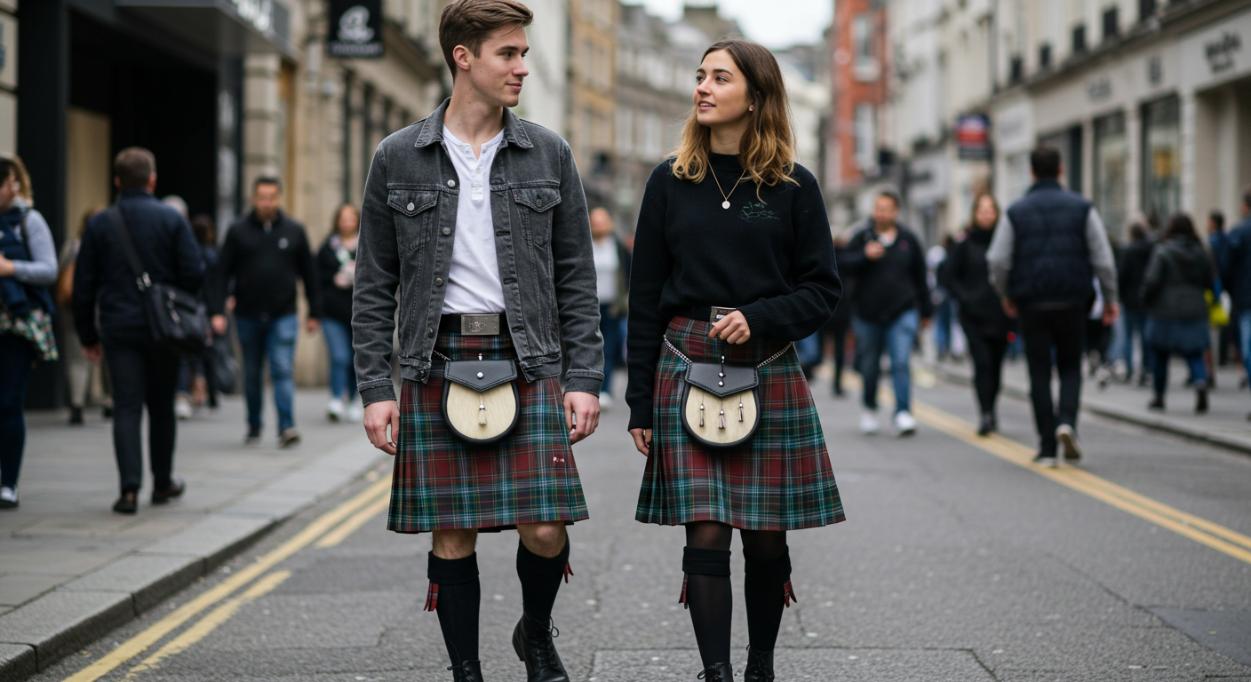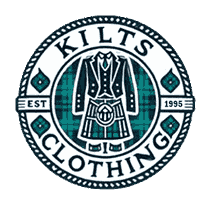Casual Kilts vs. Traditional Kilts: Key Differences and When to Wear Each

Kilts are an enduring symbol of Scottish culture and heritage, recognized globally for their unique design and cultural significance. Over time, kilts have evolved from traditional ceremonial garments to casual, everyday wear options. Although they share the exact origins, conventional and casual kilt are distinct in their materials, design, functionality, and occasions for wear. Understanding these differences can help you choose the proper kilt for any event. This blog explores the key differences between casual and traditional kilts and offers guidance on when to wear each.
Origins and Purpose of Kilts
The kilt's origins date back to the 16th century when the Highland clans of Scotland began wearing a large garment known as the "Great Kilt" or Feileadh Mor. It was a long cloth, often made from wool and featuring clan-specific tartans. The Great Kilt served multiple purposes, functioning as clothing and a blanket.
Traditional kilts as we know them today evolved in the 18th century, becoming more structured and shorter in length. They gained cultural significance, symbolizing clan identity, pride, and Scottish heritage. With modernization, kilts transitioned from exclusively ceremonial attire to casual wear, providing versatility without losing their symbolic value.
Fabric and Material Differences
Traditional Kilts
Traditional kilts are almost exclusively made from heavy wool and woven in specific tartan patterns, representing a clan or region. The weight and thickness of wool make them suitable for colder climates and formal occasions.
- Tartan significance: The choice of tartan often carries historical or familial meaning.
- Handcrafted quality: Traditional kilts are handmade by skilled artisans, adding to their authenticity and cost.
Casual Kilts
On the other hand, casual kilts come in various materials such as cotton, denim, polyester, and blended fabrics. These lighter fabrics provide breathability and comfort, making casual kilts ideal for daily wear.
- Material options: Casual kilts prioritize comfort and practicality over tradition.
- Non-tartan designs: While some casual kilts feature tartan patterns, many come in solid colors or modern designs.
Design and Construction
Traditional Kilts
Traditional kilts are characterized by pleated back and flat front, giving them a structured and formal appearance. They are designed to sit high on the waist and fall just above the knee.
- Length and pleating: Traditional kilts have meticulously arranged pleats at the back.
- No functional additions: They lack practical features like pockets or belt loops, designed for formality rather than functionality.
Casual Kilts
Casual kilts offer greater flexibility in design. They often include functional additions such as belt loops, pockets, and adjustable waistbands, catering to modern needs.
- Utility features: Cargo pockets and adjustable straps make casual kilts practical for various activities.
- Varied lengths: Some casual kilts may be shorter or tailored differently to suit different styles.
Styling Differences
Traditional Kilts
Traditional kilts are usually worn as part of a complete ensemble, including a sporran (a pouch worn around the waist), a kilt pin, ghillie brogues (traditional shoes), and a jacket or waistcoat.
- Formal accessories: Items like kilt hose (knee-high socks) and flashes are common.
- Occasion-specific outfits: Traditional kilts are typically styled for weddings, formal dinners, and cultural events.
Casual Kilts
Casual kilts are styled with a more relaxed approach. They can be paired with everyday items like t-shirts, hoodies, or button-up shirts.
- Minimal accessories: Casual kilt wedding may be worn without sporrans or traditional socks.
- Modern footwear: Sneakers, boots, or casual shoes work well with casual kilts.
Occasions to Wear Traditional Kilts
Traditional kilts are reserved for formal and ceremonial occasions where Scottish culture and heritage are celebrated. Here are some everyday events where traditional kilts are appropriate:
- Weddings: Traditional kilts are often worn by the groom and male attendees at Scottish weddings.
- Highland games: These athletic and cultural events often feature participants and attendees in traditional kilts.
- Military and official ceremonies: Many Scottish military units wear traditional kilts as part of their formal dress uniform.
- Formal dinners and cultural gatherings: Burns Night, St. Andrew's Day, and other significant events call for traditional attire.
When to Wear Casual Kilts
Casual kilts are designed for everyday activities and informal occasions. Their versatility allows them to fit into a wide range of settings, including:
- Daily wear: Comfortable and practical for running errands, meeting friends, or casual outings.
- Outdoor activities: Utility kilts are popular for hiking, camping, and festivals due to their durability and functional pockets.
- Concerts and streetwear: Casual kilts can be styled with edgy streetwear for concerts or festivals.
- Modern workplaces: In some creative or informal work environments, casual kilts may be acceptable as part of business-casual attire.
Comfort and Functionality Comparison
Traditional Kilts
- Comfort: While traditional kilts are comfortable for formal events, their heavy wool material can be less suitable for long periods of wear in warmer climates.
- Functionality: Traditional kilts prioritize aesthetic appeal over practicality, with limited storage or flexibility.
Casual Kilts
- Comfort: Lightweight fabrics and adjustable designs make casual kilts ideal for daily wear.
- Functionality: Pockets, belt loops, and modern tailoring enhance the functionality of casual kilts, making them a practical choice for active lifestyles.
Cost and Availability
Traditional Kilts
- Cost: Traditional kilts are often more expensive due to their handmade craftsmanship and premium materials.
- Availability: They are typically sold through specialized kilt makers or heritage clothing stores.
Casual Kilts
- Cost: Casual kilts are more affordable and widely available, with mass-produced options available online and in retail stores.
- Availability: You can find casual kilts in various styles through fashion brands and e-commerce platforms.
Maintaining and Caring for Each Type
Traditional Kilts
- Cleaning: Dry cleaning is recommended to preserve the wool and tartan patterns.
- Storage: Proper storage in a breathable garment bag prevents moth damage.
Casual Kilts
- Cleaning: Depending on the fabric, casual kilts can often be machine-washed. Follow care instructions to maintain quality.
- Storage: Store casually folded or hung in a cool, dry place.
Blending Traditional and Casual Elements
For those who want to balance tradition and modernity, hybrid kilts or modern interpretations can provide the best of both worlds. You can pair a traditional kilt with casual accessories or a casual kilt in a tartan pattern for a semi-formal event.
Conclusion
Understanding the differences between casual and traditional kilts can help you decide which to wear for different occasions. Traditional kilts honor Scottish heritage and are ideal for formal events. In contrast, casual kilts provide comfort and flexibility for everyday wear. Whether you want to celebrate culture or enjoy modern fashion, there's a kilt for every occasion. You can buy it from casual kilts company.


